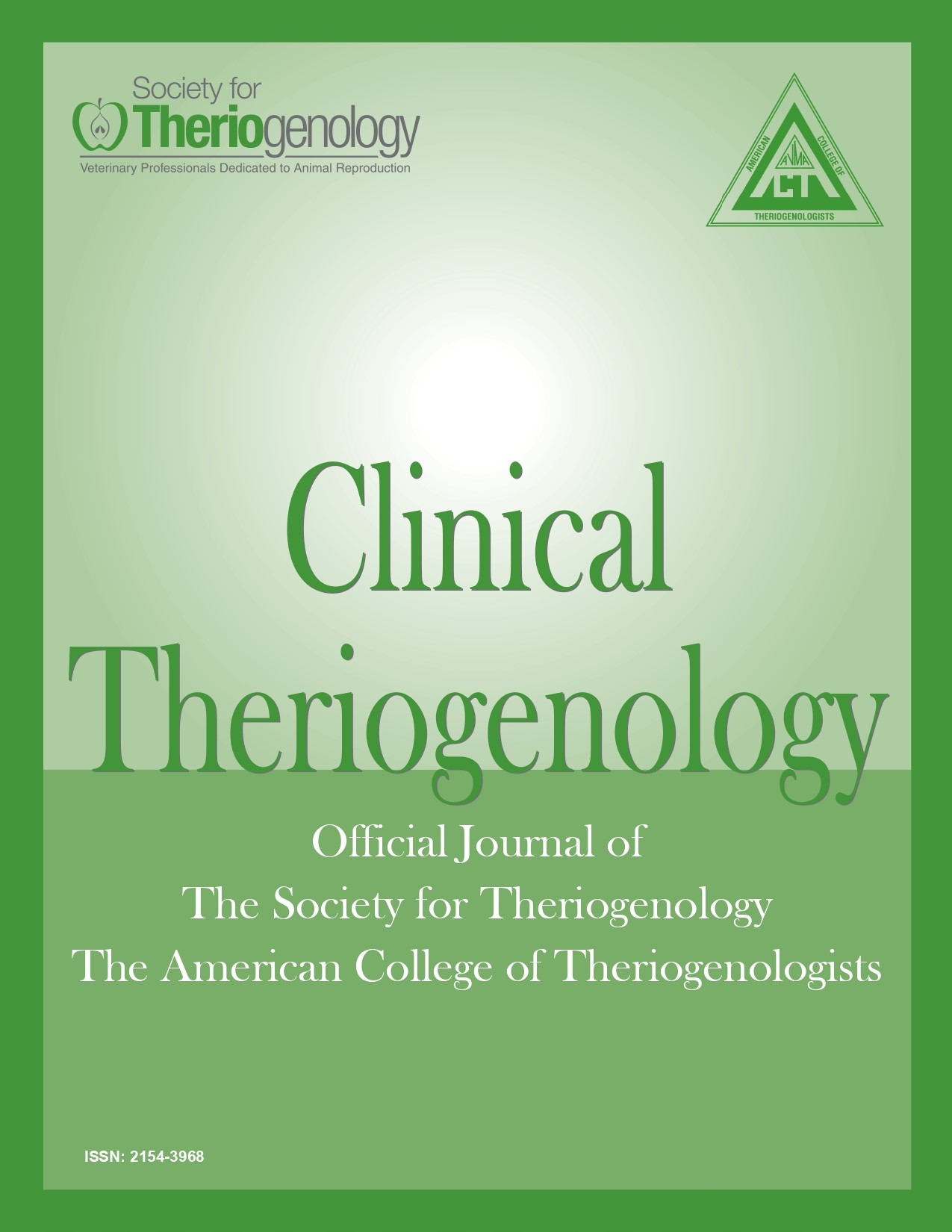Medical control of reproduction in the male dog with deslorelin subcutaneous implants
Abstract
Slow-release subcutaneous implants containing GnRH agonist deslorelin were released into the European market in 2007. Since then,
they are widely used per label by European veterinarians for the prevention of fertility in adult male dogs. Additionally, they are also used
‘off-label’ to postpone puberty, reduce unwanted behavior potentially linked to testosterone, eliminate clinical signs induced by benign
prostatic hyperplasia, reduce the size of perianal adenomas, or reverse hair loss due to alopecia X in intact male dogs. After an initial
‘flare-up’ effect (short-duration increases in blood testosterone concentrations immediately after implantation) there is a perceptible
decline in testosterone concentrations within a few weeks, due to pituitary downregulation. The dog becomes ‘medically castrated’
and infertile, with a reduction in testes size and spermatogenic arrest. Normal plasma testosterone concentrations are recovered in 18
months in 98% of dogs and reimplantations are possible for life. Preferably, reimplantation should occur prior to disappearance of
previous implant action to avoid another ‘flare-up’ effect of reimplantation. After loss of implant function, it usually takes 1 - 2 months
for complete sperm quality restoration before dog is potentially fertile again.
Downloads

This work is licensed under a Creative Commons Attribution-NonCommercial 4.0 International License.
Authors retain copyright of their work, with first publication rights granted to Clinical Theriogenology. Read more about copyright and licensing here.





